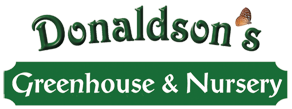Blog, Garden Blog, Garden Tips
Pruning and Fertilizing Hydrangea macrophylla for Stunning Blooms
Introduction
Hydrangea macrophylla, commonly known as bigleaf hydrangea, is a popular garden staple beloved for its large, showy blooms that grace gardens from late spring through summer. To keep your hydrangeas healthy and thriving, it’s essential to understand when and how to prune them, as well as the optimal times and methods for fertilizing. In this blog post, we’ll explore these topics to help you maintain your hydrangeas and achieve those gorgeous blooms every season.
When and How to Prune Hydrangea macrophylla
The first thing to know about pruning Hydrangea macrophylla is that the timing depends on the type of hydrangea you have. There are two main categories: mopheads (with rounded flower clusters) and lacecaps (with flattened flower clusters). Both types bloom on old wood, meaning the flower buds form on stems that grew the previous year.
- Pruning Mophead Hydrangeas
For mophead hydrangeas, the best time to prune is in late summer, right after the flowers have finished blooming. This allows the plant enough time to develop new growth and set buds for the following year’s blooms. Follow these steps to prune your mophead hydrangeas:
a. Remove any dead or damaged stems at their base. b. Cut back one-third of the oldest stems to the ground to encourage new growth. c. Prune the remaining stems just above the top set of healthy buds to shape the plant and control its size.
- Pruning Lacecap Hydrangeas
Lacecap hydrangeas require a slightly different pruning technique. Prune these in late winter or early spring, just as new growth begins to emerge. Follow these steps:
a. Remove any dead or damaged stems at their base. b. Cut back the previous year’s growth to the first or second pair of healthy buds. c. Lightly trim the remaining stems to shape the plant.
When and How to Fertilize Hydrangea macrophylla
Feeding your hydrangeas at the right time and with the right fertilizer can significantly impact their health and blooming potential. Hydrangeas generally need to be fertilized once or twice a year, depending on your soil quality.
- Timing
The best time to fertilize hydrangeas is in early spring, just as they begin to show new growth. If you live in a region with a long growing season, you can also apply a second feeding in mid-summer to boost growth and blooming.
- Type of Fertilizer
Choose a slow-release granular fertilizer with a balanced formula, such as 10-10-10 (indicating equal parts nitrogen, phosphorus, and potassium). This will provide your hydrangeas with the essential nutrients they need for optimal growth and flowering.
If you want to influence the color of your hydrangea blooms, you can manipulate the soil pH. For blue flowers, apply a fertilizer high in potassium and low in phosphorus, or use a soil acidifier to lower the pH. For pink flowers, use a fertilizer high in phosphorus and low in potassium, or add lime to raise the soil pH.
Endless Summer hydrangeas are a unique variety of Hydrangea macrophylla that are well-loved for their ability to produce blooms on both old and new wood. This characteristic makes them more forgiving when it comes to pruning, as even if you accidentally remove some buds, the plant can still produce new flowers on the current season’s growth.
While the pruning process for Endless Summer hydrangeas is similar to that of other bigleaf hydrangeas, there are a few adjustments to keep in mind.
- Timing: The ideal time to prune Endless Summer hydrangeas is in late winter or early spring, as new growth begins to emerge. This allows you to assess any winter damage and make more informed decisions about which stems to remove. You may also lightly prune after the first flush of blooms to encourage a second wave of flowers.
- Technique: Follow these steps when pruning your Endless Summer hydrangeas:
a. Remove any dead or damaged stems at their base. These can be identified by their dry, brittle, or discolored appearance.
b. If your plant is older or overgrown, cut back about one-third of the oldest stems to the ground to promote new growth and rejuvenate the plant.
c. For the remaining stems, trim them back to a healthy set of buds. Be cautious not to remove too many buds, as this may reduce the number of flowers produced in the coming season.
Remember that Endless Summer hydrangeas do not require heavy pruning, and it’s better to err on the side of caution. The goal is to maintain the plant’s overall health and encourage an abundance of blooms throughout the season.

